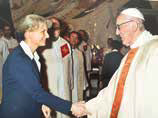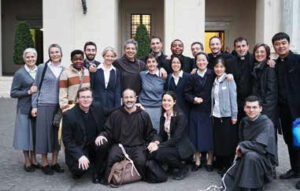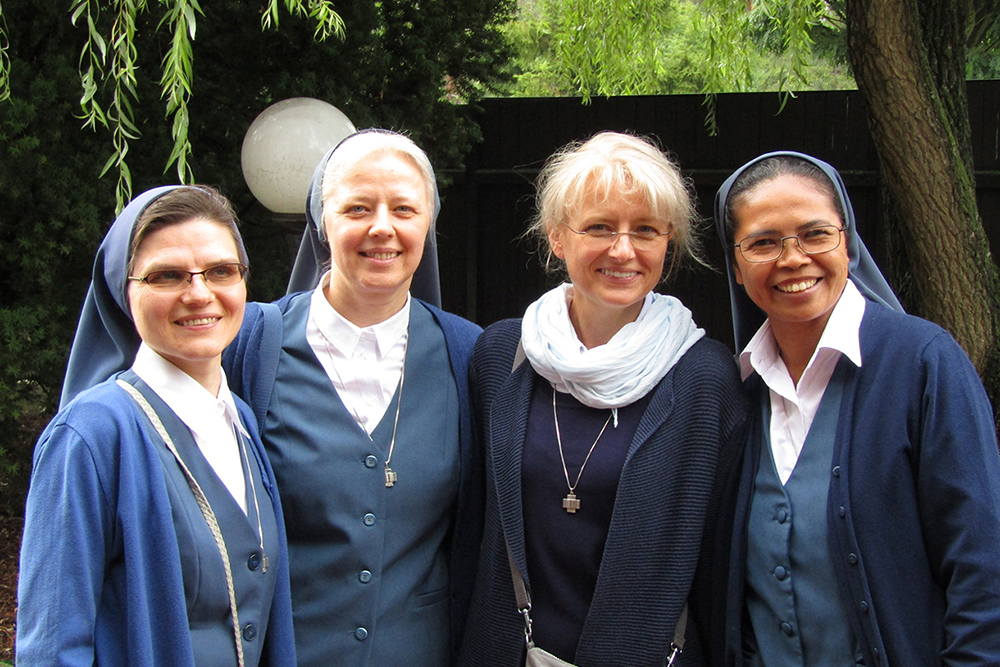 It is a good idea for everyone, especially consecrated persons, to take a brief pause from time to time on the journey through life. Occasions for this are not lacking: for example, courses of spiritual exercises, retreats, in-depth reflection sessions…. But it is also important to look within and around us so as to make an overall and thorough survey of the road we have been following.
It is a good idea for everyone, especially consecrated persons, to take a brief pause from time to time on the journey through life. Occasions for this are not lacking: for example, courses of spiritual exercises, retreats, in-depth reflection sessions…. But it is also important to look within and around us so as to make an overall and thorough survey of the road we have been following.
After 20 years in the Congregation of the Daughters of St. Paul, the Holy Spirit gifted me with a unique experience. When Fr. Marko Rupnik invited me to participate in the Cardinal Spidlik Theology Atelier (an art workshop) at the Aletti Center in Rome, I listened to his invitation with the same smile that must have appeared on the face of Sara, Abram’s wife, when she heard that she would conceive and bear Isaac. I deeply appreciated the wonderful opportunity that was being offered to me, but I didn’t think I had any real possibility of participating in the course, considering my responsibilities as a delegation councilor and the small but very promising situation of our presence in Poland, where I was stationed. Instead the Lord worked a miracle by opening the necessary doors.
 The Theology Atelier is a unique environment in which to experience beauty in a concrete way. Participation in it is open to small groups of lay people, religious and priests, who are offered an artistic experience that allows them to penetrate the mystery of Christ more profoundly and rediscover the significance of Baptism from the standpoint of communion and new life in the one Spirit. The common agenda and work schedule, set to the rhythm of prayer and liturgical celebrations, favors an assimilation of the thought of Christ and of the Church from a sapiential perspective characteristic of the Patristic era–a time in which there was no split between feeling and living, theological reflection and a gaze of faith.
The Theology Atelier is a unique environment in which to experience beauty in a concrete way. Participation in it is open to small groups of lay people, religious and priests, who are offered an artistic experience that allows them to penetrate the mystery of Christ more profoundly and rediscover the significance of Baptism from the standpoint of communion and new life in the one Spirit. The common agenda and work schedule, set to the rhythm of prayer and liturgical celebrations, favors an assimilation of the thought of Christ and of the Church from a sapiential perspective characteristic of the Patristic era–a time in which there was no split between feeling and living, theological reflection and a gaze of faith.
Taking life, not concepts, as its point of departure, the Atelier favors a rediscovery of symbolic-sapiential language rather than its abstract-argumentative counterpart, thus restoring the spiritual life to central position. The participant comes into fresh contact with his/her theological knowledge and experiences his/her faith anew, from a deeper and more unitary perspective. The air that circulates in the Atelier is characterized by joy, springing from communion in the one body of Christ, the Church.
Even though brief, the time I spent in the art workshop was very significant and even fundamental for me. Nine months was not enough time to assimilate everything I received but it was enough time for me to live an in-depth and beautiful communion with God and with my companions, with whom I shared a vibrant experience of Church and a way of living that springs from the Trinity (inasmuch as this was possible and not withstanding our limitations). This communion, which is love, helped us get to truly know one another. At the Atelier, we discovered a unity that cannot be reached by individual efforts: a dimension of genuine communion that is not equality or uniformity, but instead acceptance of others in all their diversity.
Relationships are a big problem in modern society. Our discomfort with diversity prompts us to standardize everything according to laws and rules, to the point that we eliminate the faces of the others. And without a face we cannot relate to one another. The life of the Trinity is a free gift but it is also a challenge; it is the source and ultimate goal of evangelization. I think that this communion in the one Spirit of God is the sole future of the Church.
“The Lord says this: Stand at the crossroads and look, ask for the ancient paths: which was the good way? Take it and you will find rest for yourselves” (Jr. 6:16).
This is the grace I received: to be able to take a little time out to identify the paths of the past that I’ve been following, choose the correct route to pursue, and find peace. And all this was accomplished in the plural–with others, in communion.
Ewa Glowinska, fsp

